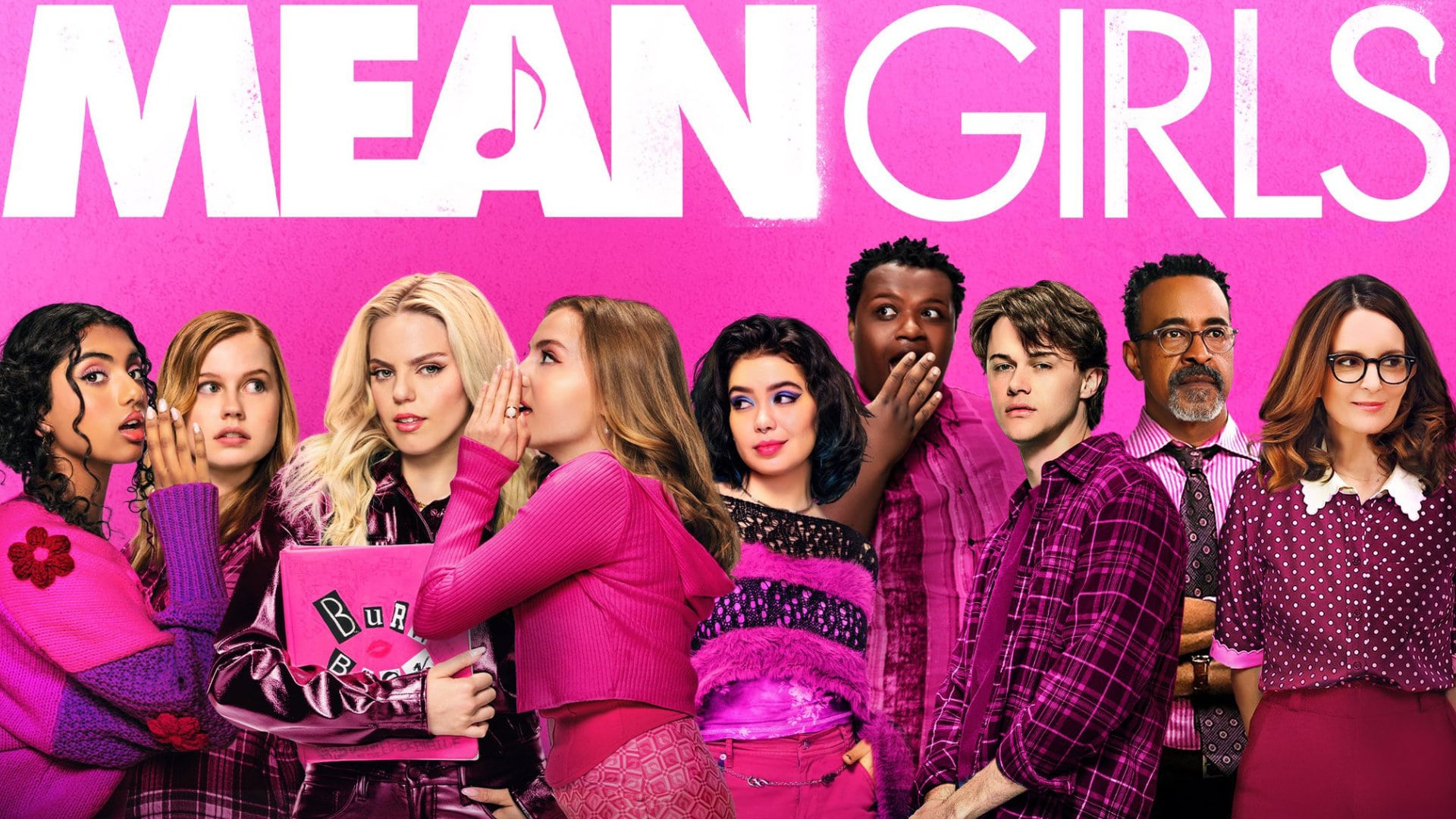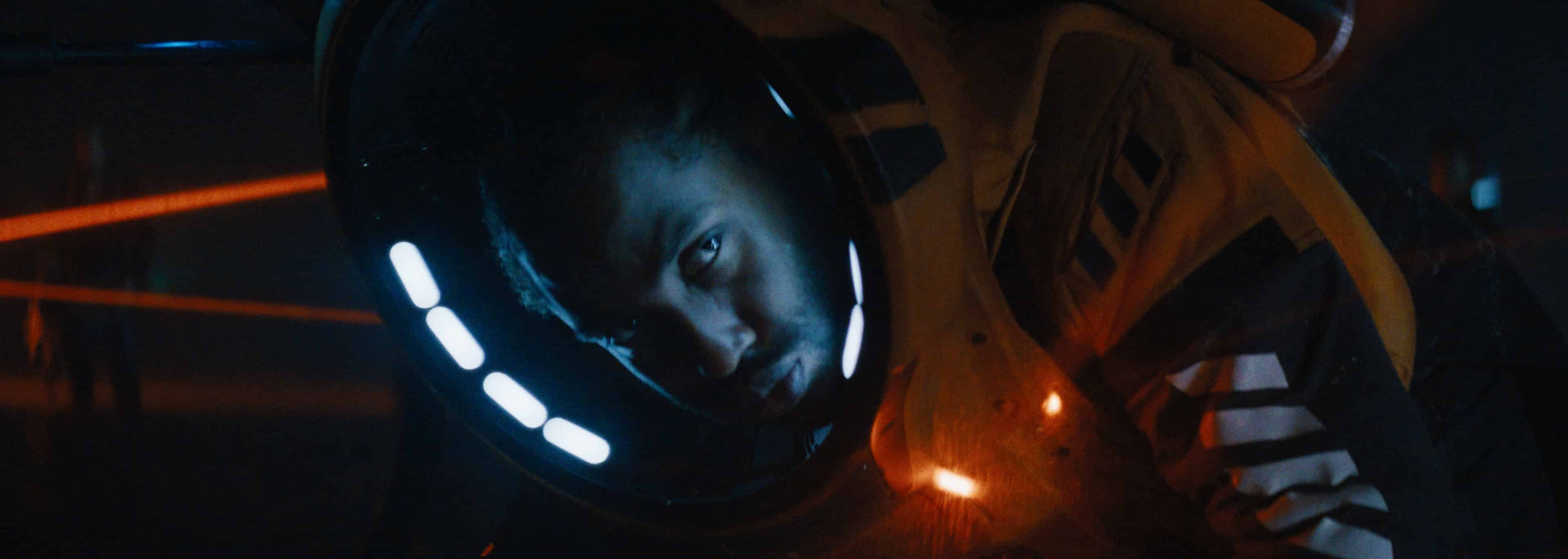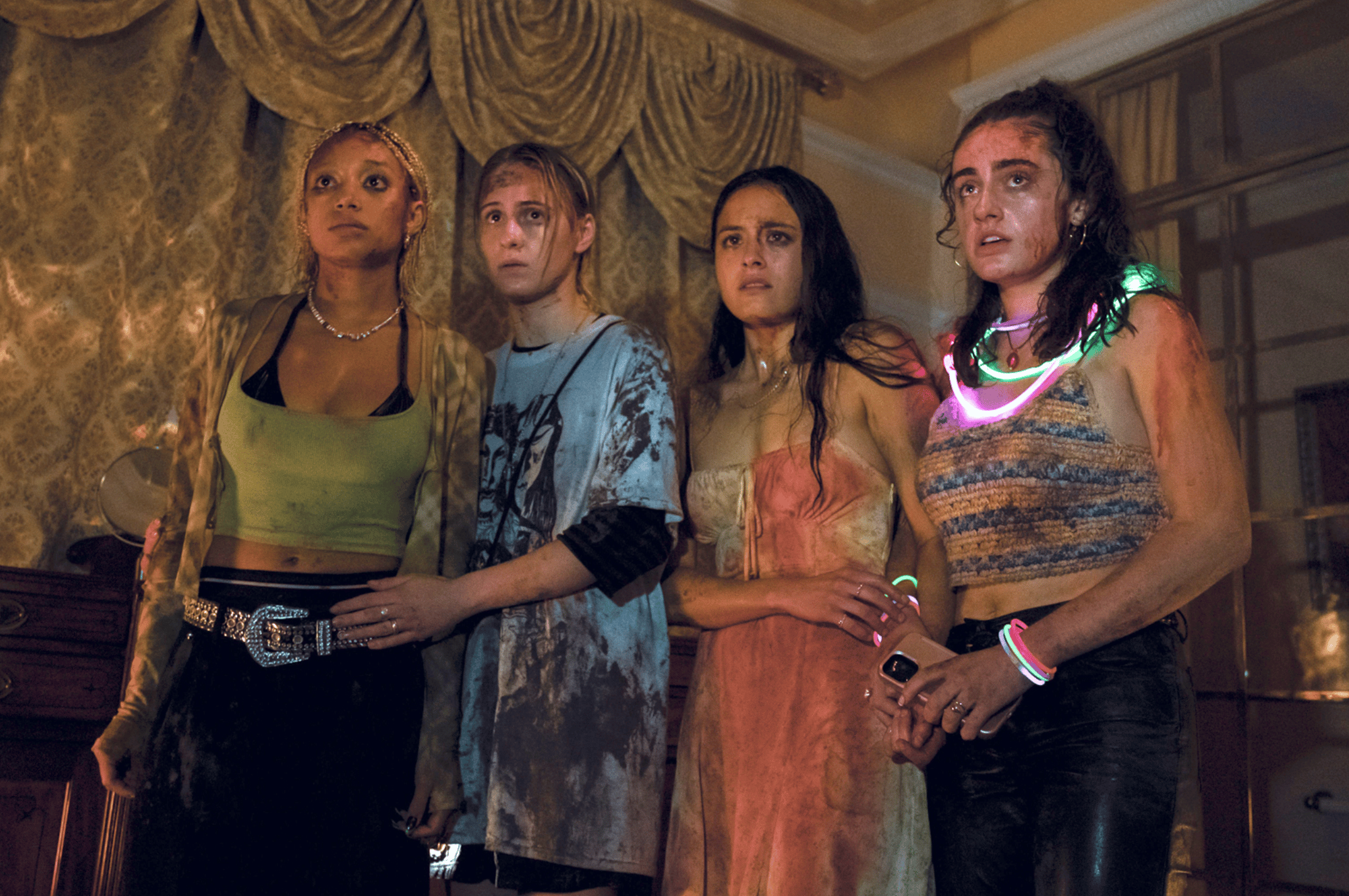It’s taken us thirty years but we’ve finally figured out what Sarah did wrong with those guards…

We love Labyrinth, it’s a film that shaped many of this writer’s formative years and we can’t believe that it turns thirty this year; but it’s a bittersweet anniversary as David Bowie sadly passed away earlier this year. To most of the team he will always be the Goblin King and his turn as Jareth is so magnetic and charismatic that you can’t help but secretly want Sarah to just forget about the baby and run away with him.
Our heroine Sarah was played by a young Jennifer Connelly. Sarah is a sixteen year old girl who doesn’t like her new stepmother and younger brother. After being left babysitting a crying baby again she wishes that her brother Toby be taken away by the goblins. Unbeknownst to her the goblins are listening as the Goblin King has romantic feelings for Sarah. Toby is taken and Sarah has a change of heart; she is then challenged to make her way through the ominous labyrinth. Along the way Sarah meets all many of strange and wondrous creatures and faces adversity at every turn. The labyrinth throws everything that it can at her and tries its best to trick her whenever it can. The most infuriating of these is the puzzle involving the two guarded doors – the puzzle where only one door leads to the castle at the centre of the Labyrinth and only the guards know which one. The twist is that one of the guards always tells the truth, the other one always lies.
Although in the film Sarah’s logic seems correct she still somehow ends up at the mercy of the ‘helping hands’. So where did she go wrong? Well we’ve scratched our heads for years and whilst there is an argument that Sarah doesn’t actually do anything wrong, it’s just the labyrinth being too unfair, we’ve always thought there was a more simple explanation.
So we set to work, put the coffee pot on and spent a frantic weekend huddled away with a pile of paper and somewhere around the middle of the night we had the eureka moment. We’ve cracked the riddle! And to save you the sleepless nights we’re going to share the secret with you. Ready?

The explanation is actually simple – the guards introduce the problem. When Sarah first arrives at the doors she has no idea what she needs to do, she doesn’t even know for a fact that only one door supposedly leads to the castle. Sarah’s solution is the correct one and is a well-known solution to an infamous logic problem which has been represented in many ways over the years, often as doorways to either heaven or hell. However, the logic requires that the person has pre-existing knowledge of the puzzle, ideally from a signpost or a trusted source. Why? Because even when the valid solution is used it is still not known which guard always tells the truth and which one always lies. Therefore the guards cannot introduce the puzzle themselves because neither of them can be trusted. In the film the puzzle is introduced by both guards, but the rules are only outlined by the blue guard. The blue guard however might be the one that always lies, in which case we can’t even trust that he has explained the puzzle correctly. Alternatively, if the blue guard always tells the truth, the Sarah’s logical solution holds and the Labyrinth is just exceptionally unfair.

So that’s it. Either the blue guard is the liar, or the Labyrinth is unfair.
We could never work it out before, we think we’re getting smarter!
Kat Hughes is a UK born film critic and interviewer who has a passion for horror films. An editor for THN, Kat is also a Rotten Tomatoes Approved Critic. She has bylines with Ghouls Magazine, Arrow Video, Film Stories, Certified Forgotten and FILMHOUNDS and has had essays published in home entertainment releases by Vinegar Syndrome and Second Sight. When not writing about horror, Kat hosts micro podcast Movies with Mummy along with her five-year-old daughter.

4 Comments
Leave a Reply
Leave a Reply
Latest Posts
-


Home Entertainment
/ 3 days agoUK’s highest-grossing doc ‘Wilding’ sets home entertainment debut
We’ve just heard that the UK’s biggest-grossing documentary Wilding has set a home entertainment...
By Paul Heath -


Film News
/ 3 days agoBack in badness – first trailer for ‘The Bad Guys 2’
The Bad Guys 2 trailer just dropped from Universal Pictures and Dreamworks Animation with...
By Paul Heath -


Interviews
/ 4 days agoLucy Lawless on creating debut documentary ‘Never Look Away’
Lucy Lawless is best known to the world as an actor. She first came...
By Kat Hughes -


Interviews
/ 4 days agoNicholas Vince recounts the journey of ‘I Am Monsters’ from stage to screen
Nicholas Vince is an actor with a history of playing monsters. He is best...
By Kat Hughes












Pingback: It’s only taken us 30 years but we’ve finally cracked that ‘Labyrinth’ puzzle… - HollywoodBizz
MrGawain
Jul 6, 2016 at 6:11 pm
Close but not quite correct. Your on point with the primes that guards could not introduce the problem, but you missed a simple fact. The Red guard affirmed the Blue guards statement. In this logic test the parties could never agree on anything.
Example 1 = Blue tells the rules with the pretense of being truthful. Red affirms the statement proving that Blue was lying because both Red and Blue cannot be telling the truth if they both agree one of them is a liar.
Example 2 = Blue tells the rules with the pretense of lying. Red affirms the statement proving that Red was also lying.
As you can see it is not possible for either of them to tell the truth if they both agree. That being said; there is a difference between the upper and lower guards. The lower guard posed that “one door lead to the castle and the other to certain death. We can verify that they have the ability to choose to be honest because the Lower Blue guard pointed out the honest overvaluation of “No that is the dead end behind you” which was a fact.
So if we take the Lower guard’s word than the Labyrinth was being fair. Sarah simply failed to deduce that both of the Upper guards were liars. Take her question and apply it to the logic of both Upper guards lying and the door to the castle should be behind the Blue Guard.
Now Sarah did not die so obviously the red door does not lead to certain death. However; an oubliette is a place to condemn people to death, so if it was indeed the wrong choice, than you may argue either way as to whether the Lower guards were being honest or deceptive, because she only progressed with Hoggle’s help.
Some have argued that the oubliette was in-fact the path to the castle but that logic fails at every level of the puzzle.
As the rules and environment constantly changed within the labyrinth it is fairly conclusive that finding the correct path was not the point. Everything put in Sarah’s path was designed to discourage her from continuing or entice her to give up. There is sound logic to suggest that anyone who held on to hope and never gave up would reach the castle in time regardless of their path. The clock is a prime example. It is every bit as possible that the Goblin King would have increased the time if her progression was slower than needed to succeed, which was affirmed at the conclusion of the story. At several points in the story the Goblin King expressed a need for Sarah to give up. It could be argued that her giving up is the capitalist that allows him to convert babies into goblins. Which would supports several of the myths and lore.
MrGawain
Jul 6, 2016 at 6:15 pm
Sorry I meant to say that the door to the castle was behind the Red Door.
EmberLeo
Jul 9, 2016 at 6:33 am
I had always assumed that the door was correct, but that she should have asked the Helping Hands to pass her back up to the top so she could continue along the tunnel to the Castle.
So the guards and their scenario were fair according to the rules binding them – and yeah, that implies that the blue guard is the honest one, but it’s possible that the one that “Always Lies” only does so *within the context of answering questions about the doors themselves* rather than in the context of anything else, clarifying the rules, etc.
However, the Labyrinth IS still unfair – by human standards, anyway – because there’s another trap and puzzle along that path to the Castle, in the form of the tunnel lined with Helping Hands. Presumably, the red door lead to *certain* death, while the blue door leads to A: the castle (up) AND B: uncertain death in the Oubliette (down), which is demonstrably escapable IF you can sort out the multi-door.
-E-